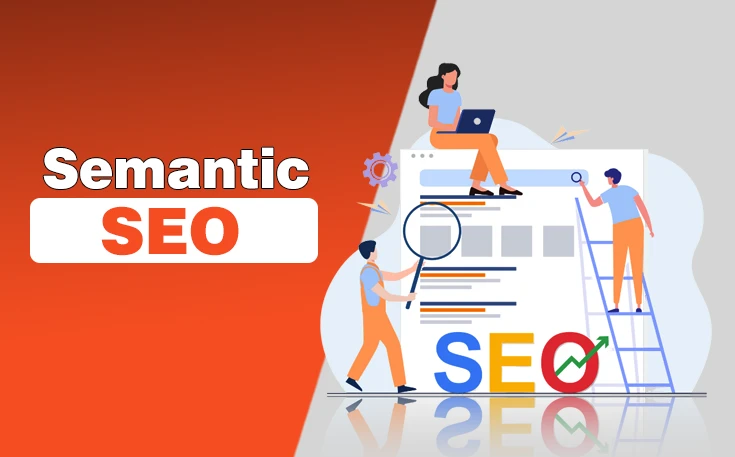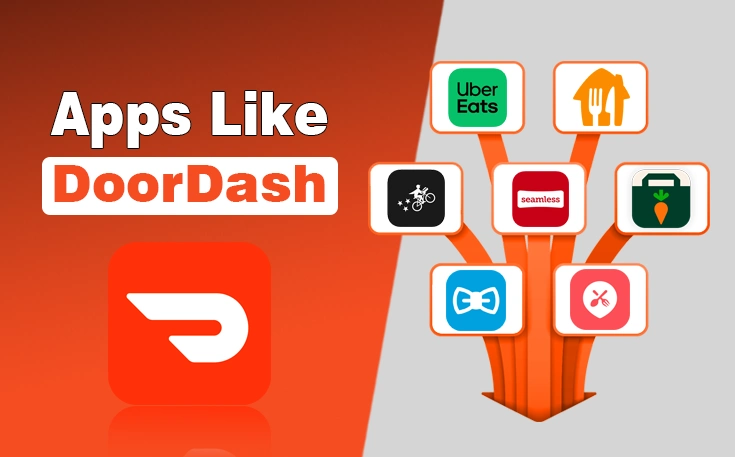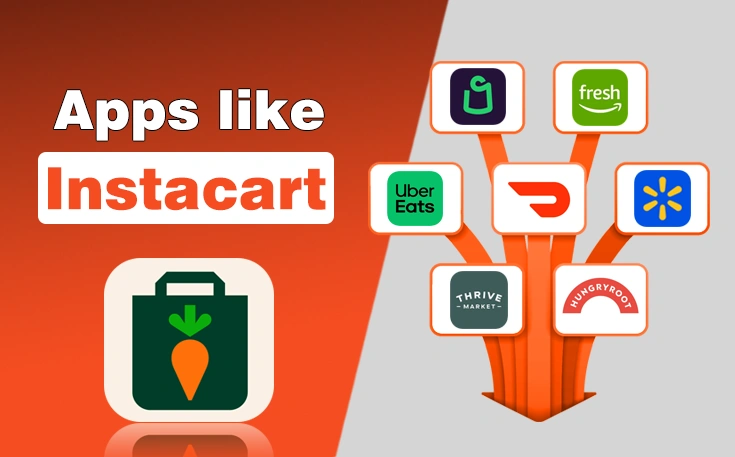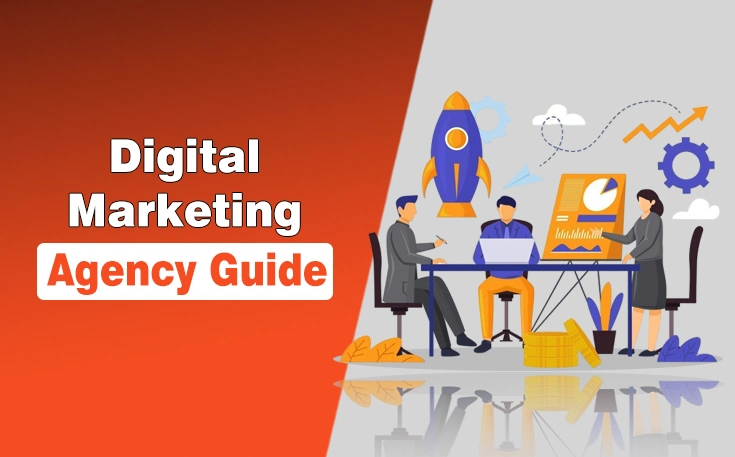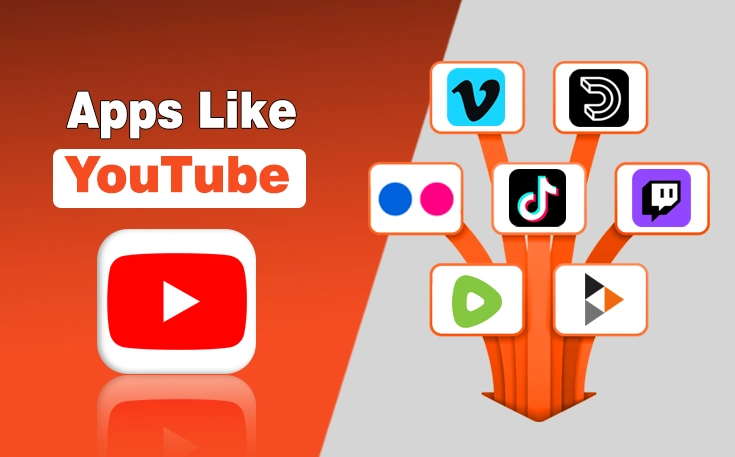In the evolving world of search engine optimization (SEO), Semantic SEO has emerged as a game changer. Traditional SEO relied heavily on keyword matching and backlinks, but with the advancements of artificial intelligence and machine learning, search engines now prioritize understanding user intent and context.
Semantic SEO is an approach that focuses on optimizing content in a way that aligns with how Google interprets meaning, context, and relationships between words. This method helps search engines deliver more relevant results and improve user experience and rankings.
To help you learn about the benefits and best ranking practices of this SEO tactic, I have created this blog post.
What is Semantic SEO?
Semantic SEO refers to the practice of optimizing content based on meaning rather than just specific keywords. It involves using related terms, structured data, and answering user queries comprehensively.
How Does Semantic SEO Work?
Search engines like Google use Natural Language Processing (NLP) and artificial intelligence to understand content and user queries better. Instead of matching exact long tail keywords, Google now interprets the intent behind searches. All this happens due to the integration of new algorithms like:
- Hummingbird (2013): Focused on understanding search intent.
- RankBrain (2015): Introduced AI to process search results intelligently.
- BERT (2019): Enhanced the understanding of natural language and context.
With these advancements, Google no longer relies solely on low KD keywords but considers the meaning behind words and how they relate to each other.
Benefits of Semantic SEO
In the under section, I have mentioned some points that will let you understand the benefits of Semantic SEO.
1. Improved Search Rankings
Since Semantic SEO focuses on intent, Google favors pages that provide in depth and contextual answers. This improves website rankings because your quality content writing strategy aligns with what users actually want.
2. Better User Experience
When you structure the content logically and answer questions directly, users can find the required information quickly. This reduces bounce rates and increases engagement, both of which are ranking factors.
3. Increased Click-Through Rate (CTR)
When your SEO friendly content is also well optimized for semantic search, it appears in featured snippets, knowledge panels, and People Also Ask (PAA) sections. These elements increase visibility and encourage clicks.
4. Higher Authority and Trust
Semantic SEO involves linking to authoritative sources and using structured data. This builds credibility and trust with the audience, which helps search engines rank your content higher.
5. Voice Search Optimization
With the rise of voice assistants like Siri and Google Assistant, voice search optimization has also gained importance. Additionally, Google searches have become more conversational.
Semantic SEO ensures your content is optimized for natural language queries. Ultimately, it increases the chances of appearing in voice search results.
Best Practices for Ranking Higher with Semantic SEO
In depth research has been one of my content writing habits since the beginning of my content marketing career. Moreover, I also implemented Semantic SEO to create proper guides that can help users and also rank in the SERP.
Now, I have explained the best practices of Semantic SEO you can implement for higher rankings.
1 – Focus on Search Intent
It is immensely important to understand the context behind the query your users make on Google. Search intent can be classified into:
- Informational: Users want knowledge like “What is White Hat SEO?”
- Navigational: Users are looking for a specific website such as “Grammarly Plagiarism Checker.”
- Transactional: Users intend to make a purchase. For example, “Buy SEO Site Checker tools online”.
- Commercial Investigation: Users compare options before purchasing e.g., “Best blogging platforms in 2025″.
You have to optimize your content according to the requirements of the audience by understanding the purpose behind their queries.
2. Use Topic Clusters Instead of Isolated Keywords
Instead of optimizing for individual keywords, structure your content around broad topics with related subtopics.
Example
If your main topic is “White Hat SEO,” you can create subtopics like:
- Importance of White Hat SEO
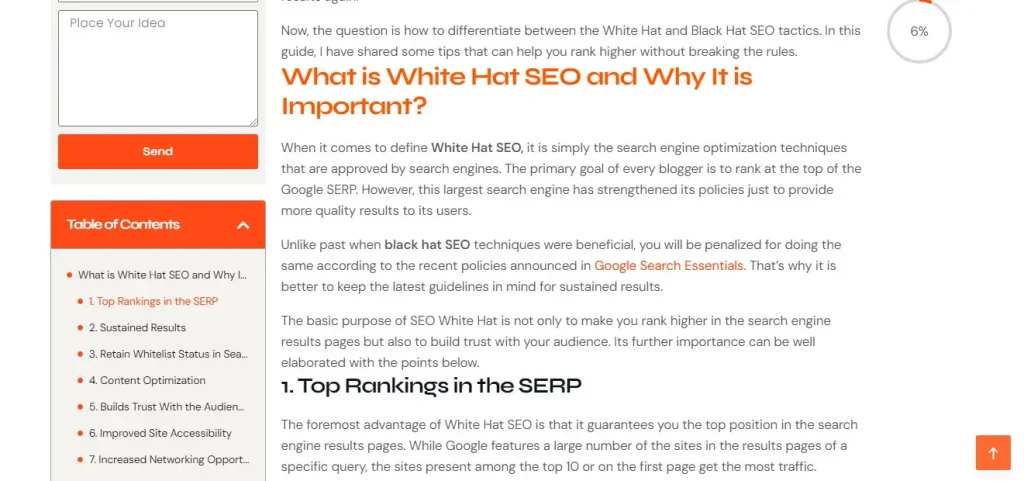
- White Hat SEO Techniques
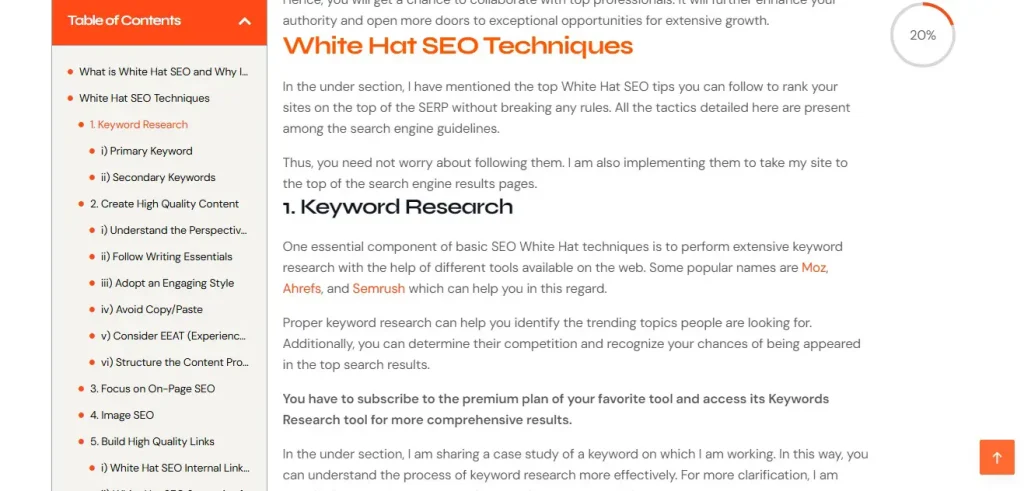
- Difference Between White Hat SEO and Black Hat SEO
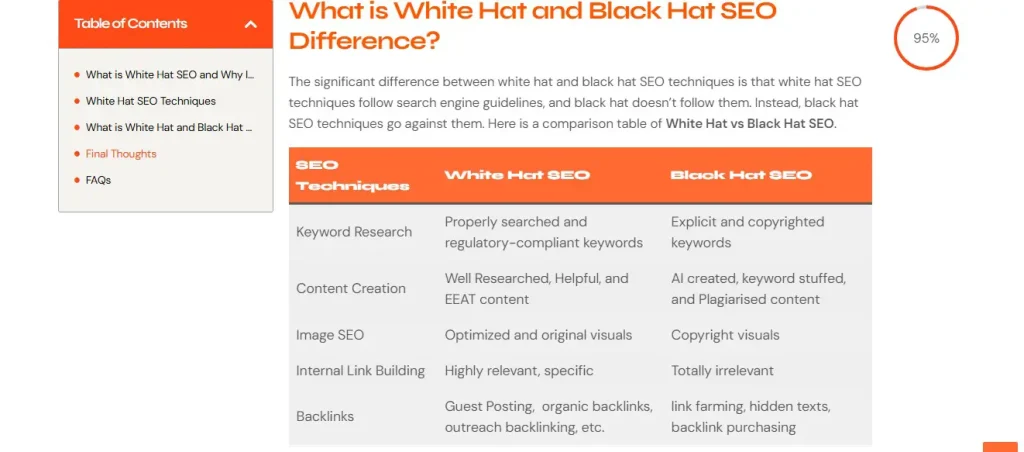
This approach enhances domain authority and boosts the rankings of your website. However, you have to make sure that you are providing your users with the desired solutions. Otherwise, Google is not going to give you an edge.
3. Optimize for Related Keywords and Synonyms
Google understands synonyms and related terms. Therefore, instead of stuffing one keyword, you should use variations and natural language. I am now going to relate this section to the previous one.
When searching “White Hat SEO” on Google, the following queries appear in the “People Also Ask” section.

That’s why I have added them to my ‘White Hat SEO” guide to make it more comprehensive and useful for users.
You should also follow and implement this Semantic SEO tactic to maximize the chances of your articles getting higher rankings in the search engine results pages.
4. Use Structured Data Markup (Schema Markup)
Structured data (Schema.org) helps search engines understand your content better and display rich results. Some common schema types include:
- FAQ Schema: Helps rank in “People Also Ask” results.
- Article Schema: Enhances blog visibility in search results.
- Breadcrumb Navigation Schema: Improves navigation and site structure.
- Product Schema: Boosts visibility for e-commerce products.
5. Write in a Conversational Tone for Voice Search
As I already mentioned voice searches are gaining massive popularity, so you should write in a conversational tone to appear in the featured snippets. Some effective tactics in this regard are the following:
- Use long tail keywords
- Answer common questions concisely.
- Structure content in a Q&A format where possible.
6. Create Comprehensive, Long-Form Content
Google favors in depth content that covers a topic thoroughly. The recent updates have ensured that the world’s largest search engine now gives a competitive edge to the sites that focus on writing E-E-A-T friendly content.
That’s why you should perform complete keyword research and identify the relevant topics with your primary ones. In this way, you can cover them all and provide complete solutions to your audience. Some effective tips are:
- 1500+ words for detailed guides.
- Short and clear paragraphs to enhance readability.
- Bullet points and subheadings to break down information.
7. Optimize Internal Linking
Internal linking helps distribute page authority and improves navigation. So, you should try to link the pages of your website which cover the same big topic. The following tricks can be beneficial for you:
- Link related articles naturally.
- Use descriptive anchor text
- Create pillar content with supporting pages.
Example
Just have a look at my “What is SEO” guide. This blog post is a perfect example of Semantic SEO and internal linking, as I have covered everything that comes under the umbrella of search engine optimization. Also, I have linked the relevant guide to deliver maximum benefits to the users.
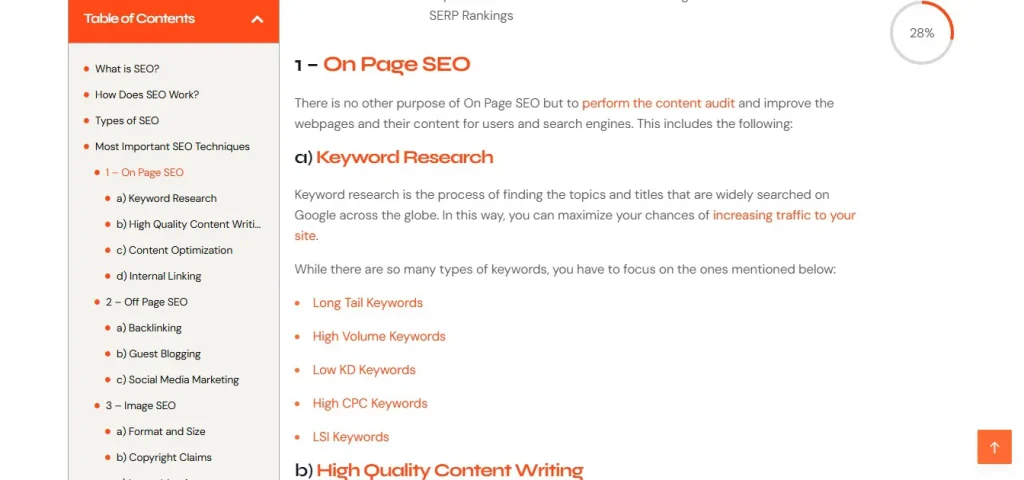
8. Use Latent Semantic Indexing (LSI) Keywords
LSI keywords are contextually related words that improve content relevance. They are highly beneficial in SEO. You can use them along with high volume keywords and high CPC keywords for better outcomes. Further,
- Use tools like LSIGraph or Google Autocomplete to find LSI keywords.
- Integrate these naturally into your content.
9. Optimize for Featured Snippets
Featured snippets appear at the top of search results and drive massive traffic. Most users get the information from the site that appears in the featured snippet. When you start a blog, you should optimize it for this section in the following ways:
- Answer questions directly within 40-50 words.
- Use bullet points and numbered lists.
- Add schema markup to increase chances of ranking in snippets.
10. Improve Page Load Speed and Mobile-Friendliness
Google prioritizes fast loading and mobile responsive websites as it enhances the user experience and engages the users. I implement some effective tactics for this purpose and also have enlisted them here:
- Optimize images to reduce load time.
- Use a CDN (Content Delivery Network).
- Ensure a responsive design for all devices.
Several platforms like WPDevShed and ThemeForest are present on the web from where you can get WordPress themes that are both responsive and mobile friendly.
11. Enhance Content with Multimedia
Adding images, infographics, and videos increases engagement. That’s why you should create high quality images and glorify your content with them instead of dwelling on the JPG vs PNG battle.
Just focus on optimizing the elements of your images and make them eye catching and informative as pictures speak better than words.
- Use relevant images with alt text for Image SEO.
- Focus on YouTube SEO and embed videos to keep users on your page longer.
- Create infographics that simplify complex topics.
12. Monitor Performance and Optimize
Lastly, you have to monitor the performance of your website and optimize its weak areas to beat the competition. Some key tools that can help you are:
- Google Search Console to track rankings and errors.
- Google Analytics to analyze traffic behavior.
- Ahrefs or SEMrush to monitor backlinks and keyword rankings.
Final Thoughts
These are the details about Semantic SEO and how it can benefit you in ranking your site higher in the SERP. In short, this advanced search engine optimization tactic is the future of blogging. You can significantly improve rankings, user experience, and traffic by focusing on intent, context, and structured content.
I have detailed all the essential practices you can follow along with Technical SEO and social media marketing to make your site more functional. Hence, you can get higher rankings in the SERP and get more visitors.

